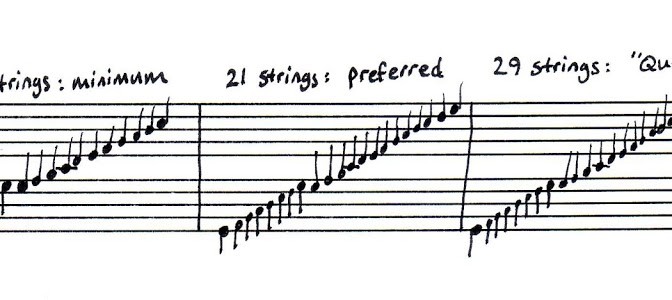Discussing what is a suitable extra-small harp for a child (extra-small for both ergonomics of a child’s size, and also to make it cheaper to purchase), the question of the range of the instrument came up.
I think that the medieval gamut, from bass G up to treble e, is an important factor in thinking about the old music. It makes little sense to me to cut off the bass of the gamut only to add in extra treble strings above this, yet this is what many modern harp makers do.
The gamut (including the doubled sister strings) takes 21 strings (centre chart). If you need less than this, then cutting off the bottom as well as the top makes sense. To play Burns March, one of the key beginner tunes, in the usual position, requires from bass c up to treble a, 14 strings including the sisters. Add two more in the treble to get 16 covering 2 octaves (left hand chart).
I would set up a replica of one of the extant medieval Irish and Scottish harps as shown in the right hand chart. The extant continental medieval harps tend to have 26 strings, i.e. 3 less in the treble.
There’s more technical discussion about historical range and gamut on my other site

